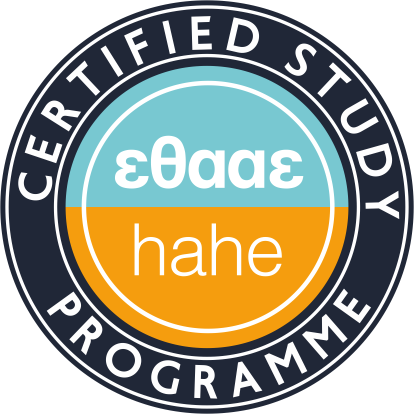General Linguistics and Translation I
Teaching Staff: Tsigou Maria
Course Code: YK-5100
Gram-Web Code: ΓΛ1001-1
Course Category: Specific Background
Course Type: Compulsory
Course Level: Undergraduate
Course Language: Greek
Semester: 5th΄
ECTS: 2
Total Hours: 2
Erasmus: Available (in English)
The module makes an initial attempt to introduce students to the close relationship between Linguistics and Translation through the analysis of concepts that demonstrate the contribution of the former to study of the latter and vice versa. The module offers a detailed analysis of topics such as the relationship between language and communication, the nature of language, differences between human and the ways of communication between animals, the nature of speech, languages and extralinguistic reality, language varieties and communication, language use, language material, the double articulation of language and language economy. The relationship between language and meaning, the signifying nature of language, the nature and properties of the linguistic sign, the concept of the language system, the concepts of synchrony, diachrony and dynamic synchrony are all studied. The difference between syntagmatic and paradigmatic relations is further analysed with the use of examples from various languages.
Upon successful completion of the course, the students will be able to:
- To be introduced to basic linguistic theories regarding language analysis as well as language analysis of their working languages
- To recognize the ways that language works in general as well as the ways their working languages work
- To analyze, using specific methodological tools of Corpus Linguistics, texts in their working languages in order to comprehend every possible information before they start translating them
- To be introduced to the methodology for a research assignment using Corpus Linguistics tools
Week 1
Scope and sub-domains of Linguistics and its contribution to Translation.
Week 2
Primary functions and features of human language by comparing it with other communication systems.
Week 3
Language as an individual and social entity: style and (language) variety.
Week 4
Texture and qualities of the linguistic sign.
Week 5
Analysis of the signifié: value, polysemy, synonymy, semantic fields, hypernyms and hyponyms. Application on examples from different languages.
Week 6
Analysis of the signifiant: homography, homophony, paronymy and false friends. The signifiant formulation mechanisms. Application on examples from different languages.
Week 7
Language as a system of relationships. Paradigmatic and syntagmatic relationships. Application on examples from different languages.
Week 8
Minimal semantic units and words, or how each word usually carries more than just one information. Analysis of examples from different languages.
Week 9
Combinations of minimal semantic units: collocations, idioms and freedom of choice. Presentation of collocation table and application through exercises.
Week 10
The process of producing meaning and the role of Grammar. Different ways to express meaning from other languages.
Week 11
Evolution of language. The concepts of Synchrony, Diachrony and Dynamic Synchrony through examples of the Greek language.
Week 12
Theoretical approaches of grammatical analysis. Comparison and review of the presented theories.
Week 13
Course recap and review of the most important course material.
Γούτσος Δ. (2012) Γλώσσα: κείμενο, ποικιλία, σύστημα. Αθήνα: Κριτική.
Μπαμπινιώτης Γ. (1980) Θεωρητική Γλωσσολογία Αθήνα: Ιδιωτική έκδοση.
Τσίγκου Μ. (2010) «Σύντομη εισαγωγή στις σχέσεις γλωσσολογίας και μετάφρασης (με παραδείγματα από το ζεύγος Γαλλικής-Ελληνικής)» in Dictio 3, Επιστημονική Επετηρίδα – Υearbook 2008-2009. Κέρκυρα: Ιόνιο Πανεπιστήμιο, Τμήμα Ξένων Γλωσσών Μετάφρασης και Διερμηνείας. 225-250.
Mounin G. (2003) Κλειδιά για τη γλωσσολογία. Αθήνα: Μορφωτικό Ίδρυμα Εθνικής Τραπέζης.
The course’s duration is two hours by lecture delivered with the help of PowerPoint presentations and internet material. Exercises for understanding and applying the theoretical knowledge is regularly handed out to the students with selected examples from different languages, and they are considered an integral part of the learning process.
Use of ICT in teaching.
Students are assessed based on their participation in the teaching process and their performance during the relevant exercises throughout the term. The final assessment and grading of the course will be held by written/oral exams.
Back
Undergraduate
Secretariat
Galinos Building (1st floor)
Corfu, GR-49132
Open to the public:
Mon, Wed, Fri: 11am - 1pm
Tue, Thu: 11am - 1pm (Erasmus+)
 E-Class Platform
E-Class Platform
 eSecretariat
eSecretariat
 Webmail
Webmail
 Learning Material Management
Learning Material Management
 Internship Portal
Internship Portal
 Library
Library





 General Linguistics and Translation I
General Linguistics and Translation I
